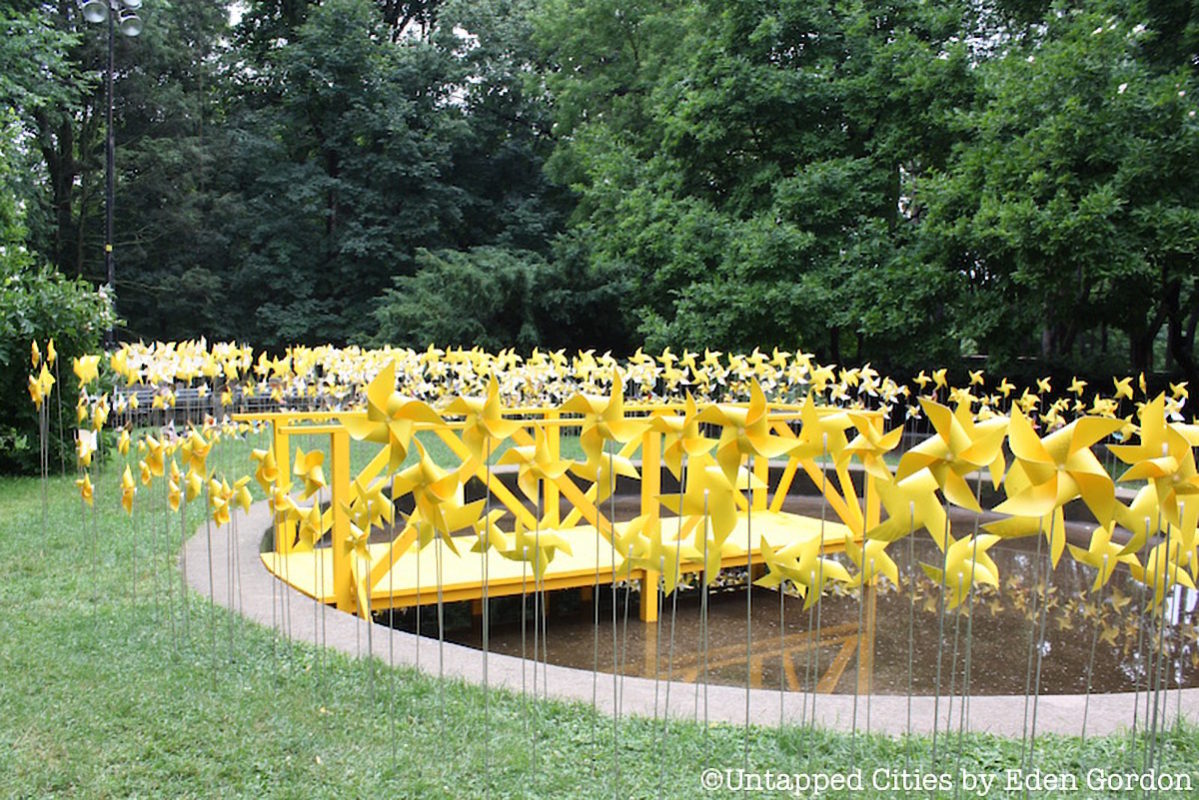
On July 7th, Prospect Park‘s Connective Project opened in the park’s long-abandoned Rose Garden. The exhibit features hundreds of pinwheels, some of which are made of art that honors the park. A distinctly human tribute to creativity and color, the pinwheels will be on display through July 17th.
The installation is the result of a collaboration between the Prospect Park Alliance, AREA4, and Suchi Reddy of Reddymade Architecture & Design. It features pinwheels made of photographs, poems, and other creations by a diverse array of Brooklyn artists, who sent submissions in based on the prompt, “Share imagery based on your love for Prospect Park.” The pinwheels were created by GSB Digital, which painstakingly printed and folded each pinwheel.
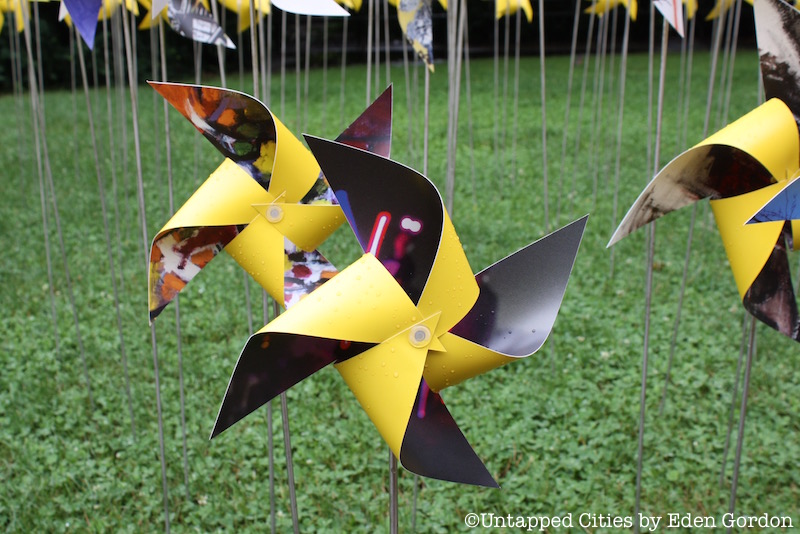
At the unveiling, Ms. Reddy said that when she designed the project, she asked herself, “How do we create something that emphasizes the architecture of this place and exposes it to the community so everyone can engage?” She designed the pinwheels diametrically, specifically choosing their exact locations and heights to create an installation that seems to move and undulate as your eyes wander over it.
In attendance at the unveiling was Brooklyn senator Kevin Park, who expressed his love for the park in a brief speech, admitting that he had not previously heard of the Rose Garden. It’s such a small spot that this is unsurprising, but now visitors have a real reason to visit the space.
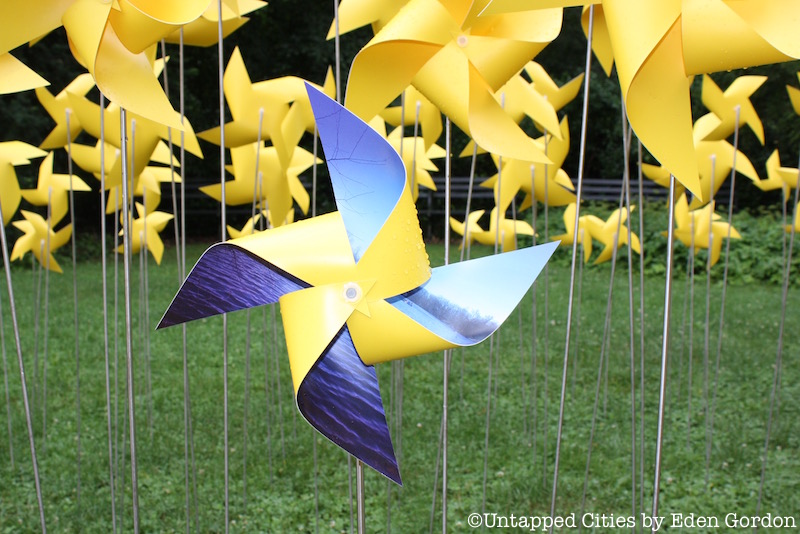
In June, we wrote about the exhibition back when the Rose Garden was nothing but a stretch of grass broken by its long-empty fountains. Today, each of these fountains is surrounded by a garden of brilliant pinwheels that fan out and spin in the wind. Crafted out of weather-resistant, compostable paper, the pinwheels are made of printed works by many different artists. Throughout the setup process, participants were invited to create their own pinwheels to add to the mix. One of the installation’s central goals was to incorporate many different voices from different community members, so that the growing and changing nature of the pinwheels is a perfect symbol of this collaborative effort.
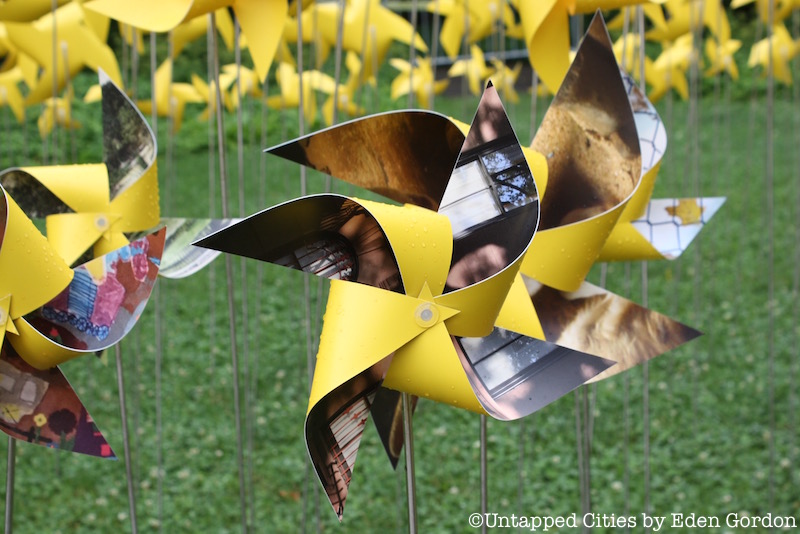
The submissions were judged, and an artist named Ansel Oommen was chosen as the winner. Prints of his work, Chitin & Furanocoumarin, will be sold in the Brooklyn Museum‘s gift shop, along with works by the top ten finalists. Pioneer Works will be displaying twenty of the winning works as part of its Second Sunday event on August 13th.
Pinwheels are symbols of innocence and hope, and this is the kind of feeling that Reddymane and the installation’s collaborators hoped to instill in an area that has been largely abandoned for many years. They are influenced by Frederick Law Olmsted and Calvert Vaux, the park’s original designers, who initially designed a children’s playground and floral display where the Rose Garden’s now-empty fountains stand today.
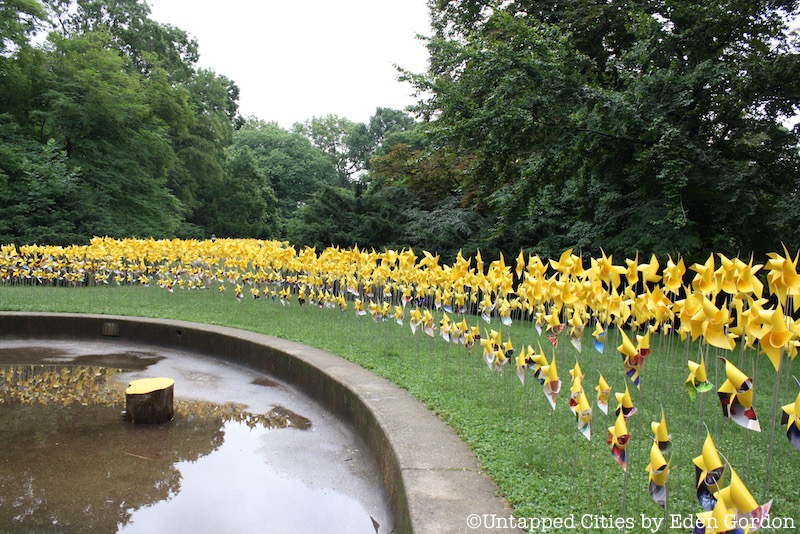
Over the years, the space fell into disrepair, though not for long—in the 1960s, it functioned as a place where mostly gay men could meet in secret, and in this way it was a hub of liberation and freedom for that community.
Now, the Prospect Park Alliance is facilitating a new era for the Rose Garden. They hosted a community design workshop on June 10th, where they collected feedback about what the participants and park-goers in attendance would like to see fill the space in the future.
It had been raining the entire morning before the unveiling, but the skies cleared just in time, and everything smelled like fresh rain as the last pinwheels were set up. The Rose Garden is so hidden that when you find it, the pinwheels rise as unexpectedly as the first sparks of fireworks.
“Just five weeks ago, this was a twinkle in someone’s eye,” said Lucy Gardner, Prospect Park’s communications manager.
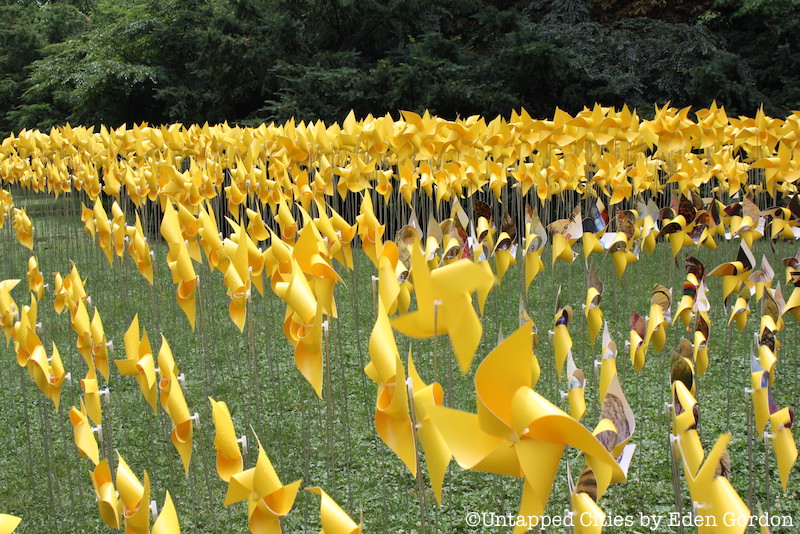
For more, check out The Top 12 secrets of Brooklyn’s Prospect Park and read about Prospect Park’s view from Lookout Hill.






